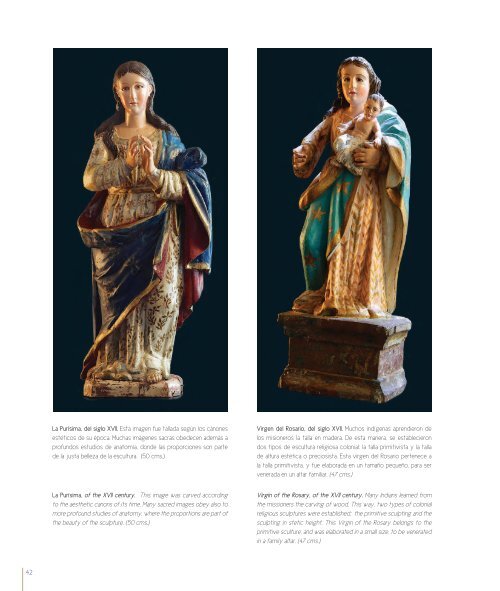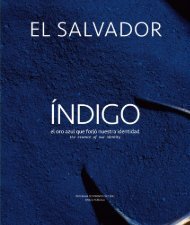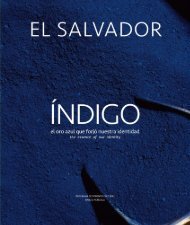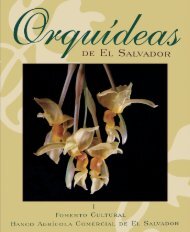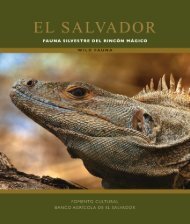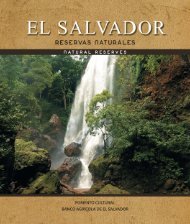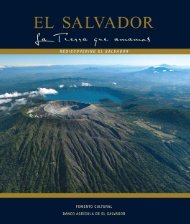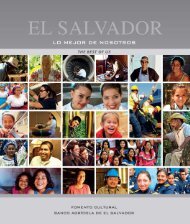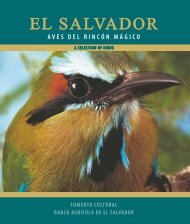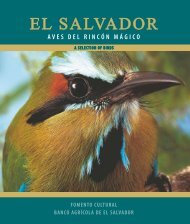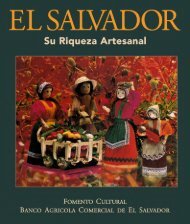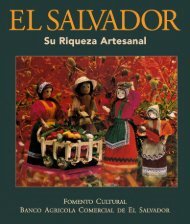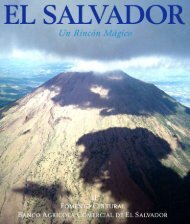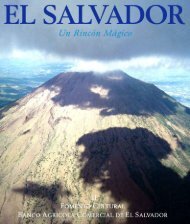Monumentos y Esculturas del Rincón Mágico
You also want an ePaper? Increase the reach of your titles
YUMPU automatically turns print PDFs into web optimized ePapers that Google loves.
La Purísima, <strong>del</strong> siglo XVII. Esta imagen fue tallada según los cánones<br />
estéticos de su época. Muchas imágenes sacras obedecen además a<br />
profundos estudios de anatomía, donde las proporciones son parte<br />
de la justa belleza de la escultura. (50 cms.)<br />
Virgen <strong>del</strong> Rosario, <strong>del</strong> siglo XVII. Muchos indígenas aprendieron de<br />
los misioneros la talla en madera. De esta manera, se establecieron<br />
dos tipos de escultura religiosa colonial: la talla primitivista y la talla<br />
de altura estética o preciosista. Esta virgen <strong>del</strong> Rosario pertenece a<br />
la talla primitivista, y fue elaborada en un tamaño pequeño, para ser<br />
venerada en un altar familiar. (47 cms.)<br />
La Purísima, of the XVII century. This image was carved according<br />
to the aesthetic canons of its time. Many sacred images obey also to<br />
more profound studies of anatomy, where the proportions are part of<br />
the beauty of the sculpture. (50 cms.)<br />
Virgin of the Rosary, of the XVII century. Many Indians learned from<br />
the missioners the carving of wood. This way, two types of colonial<br />
religious sculptures were established: the primitive sculpting and the<br />
sculpting in stetic height. This Virgin of the Rosary belongs to the<br />
primitive sculture, and was elaborated in a small size, to be venerated<br />
in a family altar. (47 cms.)<br />
42


